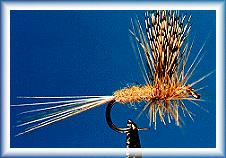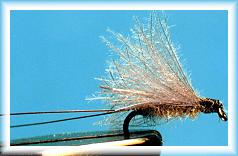Fly Tying for Beginners
An Introduction to Fly Tying
The first thing you need to know about tying your own flies is a little bit about the flies themselves. Some of you will probably know this information, but there are a few who don’t; so I’ll give you a refresher course.


Dry flies are simply flies that float. They usually represent adult insects that are emerging (breaking out of their nymphal shuck), drying their wings so they can fly away, or returning to the water to lay eggs.
Since dry flies are the most fun to use (you get to see the fish take the fly), more fly patterns have been designed as dry patterns than any of the rest. Although some folks separate emerger flies from dries, since they usually float, I’ll include them with dries.
Thanks Al Campbell for the great instructions.
Ron

